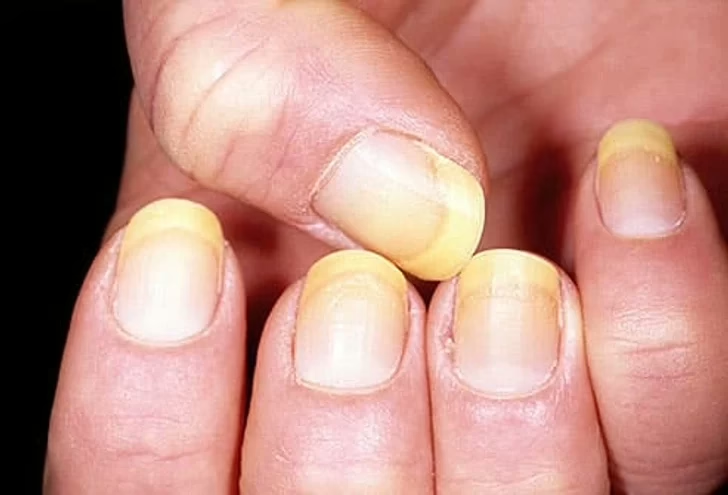Fingernails serve more than just a protective or decorative role; they act as subtle health barometers, often revealing internal health concerns well before other symptoms become noticeable. Variations in nail color, texture, or shape can offer valuable insights into issues such as circulation problems, nutritional shortages, and underlying diseases affecting organs like the heart, lungs, liver, or thyroid gland.
Despite their slow growth and seemingly minor changes, nails are frequently overlooked. A faint yellow hue might be attributed to nail polish, ridges dismissed as a natural part of aging, or spoon-shaped nails considered harmless. However, medical experts emphasize that recognizing these subtle signs can be crucial, as early identification of conditions ranging from diabetes to iron deficiency often begins with observing the fingertips.
Yellow Nails:
While repeated application of dark nail polish or exposure to certain chemicals can cause nails to yellow or thicken, persistent discoloration may indicate more serious health concerns such as:
- Respiratory ailments like chronic bronchitis or other lung diseases.
- Fungal infections, which often cause nails to become thickened or crumbly.
- Metabolic disorders including diabetes or thyroid imbalances that alter nail pigmentation.
Advice: If yellowing persists beyond a few weeks or is accompanied by symptoms like shortness of breath or swelling, it’s important to seek medical advice promptly.
Pale or Whitish Nails:
Nails that appear very pale or almost white with a subtle pink edge may be indicative of:
- Anemia, where reduced iron levels limit oxygen delivery in the bloodstream.
- Liver conditions such as hepatitis or cirrhosis, which can cause a pale nail bed.
- Heart failure or kidney disease, both of which impair circulation and affect nail appearance.
Clubbing – Rounded, Bulging Nails:
Clubbing occurs when the fingertips swell and nails curve over them, resembling a dome shape. This phenomenon is commonly associated with:
- Chronic lung diseases, including persistent infections or lung cancer, often linked to low oxygen levels.
- Cardiac issues such as congenital heart defects or other circulatory problems.
- Inflammatory bowel diseases or liver dysfunctions.
Brittle or Splitting Nails:
Frequent exposure to water, harsh soaps, or nail polish removers can dry out nails, causing them to become fragile or split. However, ongoing brittleness might also signal:
- Thyroid disorders, whether hyperthyroidism or hypothyroidism, which can weaken nail structure.
- Deficiencies in essential nutrients like biotin, zinc, or protein.
- Fungal infections, especially when accompanied by discoloration.
Dark Lines or Spots Beneath Nails:
Dark streaks or spots under the nail are not always harmless bruises; they may represent:
- Melanoma, a dangerous form of skin cancer that can develop under the nail.
- Infections or trauma, particularly if the spot enlarges or changes shape.
Maintaining Nail Health:
Not all nail changes indicate serious illness-aging, minor injuries, or cosmetic products can cause temporary alterations. The crucial factor is to monitor for persistent changes, discomfort, or sudden developments that warrant professional evaluation.
To promote strong, healthy nails:
- Consume a nutrient-rich diet abundant in proteins, iron, and vitamins.
- Keep nails clean and neatly trimmed to reduce infection risk.
- Seek immediate dermatological assessment for any dark streaks that spread, deepen, or cause nail lifting.
- Consult a healthcare provider if you notice gradual nail clubbing or fingertip swelling to evaluate lung and heart health.
- Incorporate regular blood work if experiencing unexplained fatigue or weakness.
- Protect your hands with gloves during household chores, moisturize frequently, and avoid prolonged exposure to harsh chemicals.
- Allow nails to rest periodically from polish and other cosmetic treatments.






















